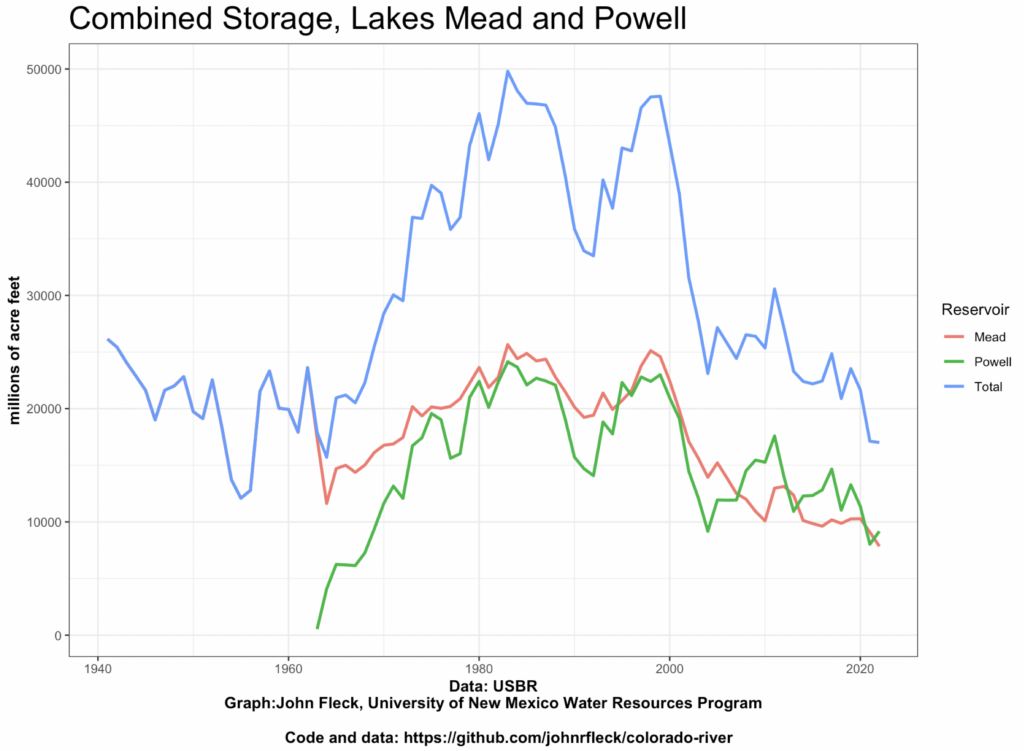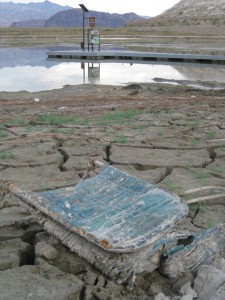A guest post from Tom McCann, retired Deputy General Manager of the Central Arizona Project and a longtime leader of Arizona’s Colorado River governance. (This grew out of a comment from Tom on the blog and a subsequent email exchange.)
By Tom McCann
As we struggle with a long term management plan for water use in the Lower Colorado River Basin, we must recognize two important realities:
- Most important, there needs to be a new “normal”—the U.S. lower basin states get something less than 7.5 maf each year (6.5? 6.8?), and only get 7.5 when reservoirs are high.
- This problem can’t be solved on the back of Arizona’s junior status, by simply rolling back the amount of water permitted to flow down the Central Arizona Project canal. If there is any hope of consensus, then everyone will need to make reductions.
We’ve long known that the structural deficit in the Lower Basin is unsustainable. We didn’t pay much attention to it even as Lower Basin uses increased in the late 20th century because the river gave us many bountiful years. (Why worry about your annual budget when you keep winning the hydrologic lottery?) But the days of regular equalization releases are behind us now and it is time to adapt to the new reality–that there simply isn’t 9 MAF for the Lower Basin States and Mexico to expect to use each year. Neither the 2007 Guidelines nor DCP embrace that reality; both are premised on the Lower Basin using its full apportionment each year, with reductions occurring only after Lake Mead has fallen below certain levels. That approach dooms Lake Mead to perpetually hover around the 2007/DCP shortage elevations.
What is needed is a fundamental change in mindset: the Lower Basin must reduce the volume of water it uses in “normal” years to something well below 9 MAF, only taking more when and if the reservoirs fill again. The difficulty (obviously) is how to make the necessary reductions, or more precisely who is to reduce their use. Some think the entire reduction must fall on Arizona, and specifically the CAP, as the junior priority holder. As long as that opinion prevails, it is unlikely that the Lower Basin can reach agreement on a long-term solution to the structural deficit.
The structural deficit has been explained before. Three primary causes for the deficit are: (1) the failure to account for evaporation losses at Lake Mead (around 600,000 AF per year); (2) the failure to charge California and Arizona for the Lower Basin’s share of Mexican Treaty deliveries (750,000 AF per year) as required by section 4(a) of the Boulder Canyon Project Act; and (3) bypass flows to Mexico resulting from Reclamation’s failure to operate the Yuma Desalting Plant or to implement any other alternative (typically more than 100,000 AF per year).
Reservoir evaporation losses are the responsibility of all system users. In the upper basin, such losses are attributed to each state in proportion to their apportionment. But the Supreme Court did not address evaporation losses in Arizona v. California so at present they are ignored in the lower basin, which means that CAP effectively bears the burden of all evaporation at Lake Mead.
Section 4(a) of the Boulder Canyon Project Act provides that when the Mexican Treaty obligation cannot be supplied out of surplus Colorado River water (and does anyone really believe there is surplus water anymore?) then California and Arizona will each provide one-half of the Lower Basin’s contribution—375,000 acre-feet each. The legislative history of the Boulder Canyon Project Act makes clear that those contributions are to come from existing uses in each state, not from storage in Lake Mead. Arizona Senator Carl Hayden worked hard to include that provision in the 1928 Act, but to date Reclamation has chosen to ignore it—just as it ignores the federal obligation to replace bypass flows to Mexico.
Equitable accounting for evaporative losses and Mexican Treaty deliveries would greatly improve the chances of a consensus solution to reduce consumptive uses and losses in the lower basin.

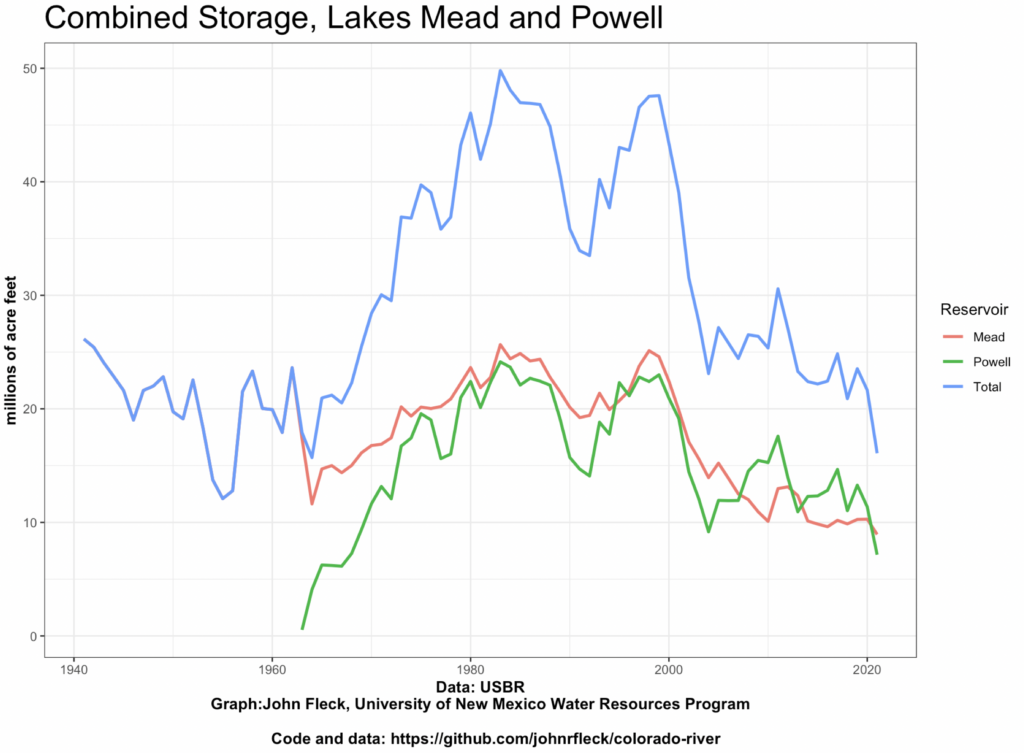
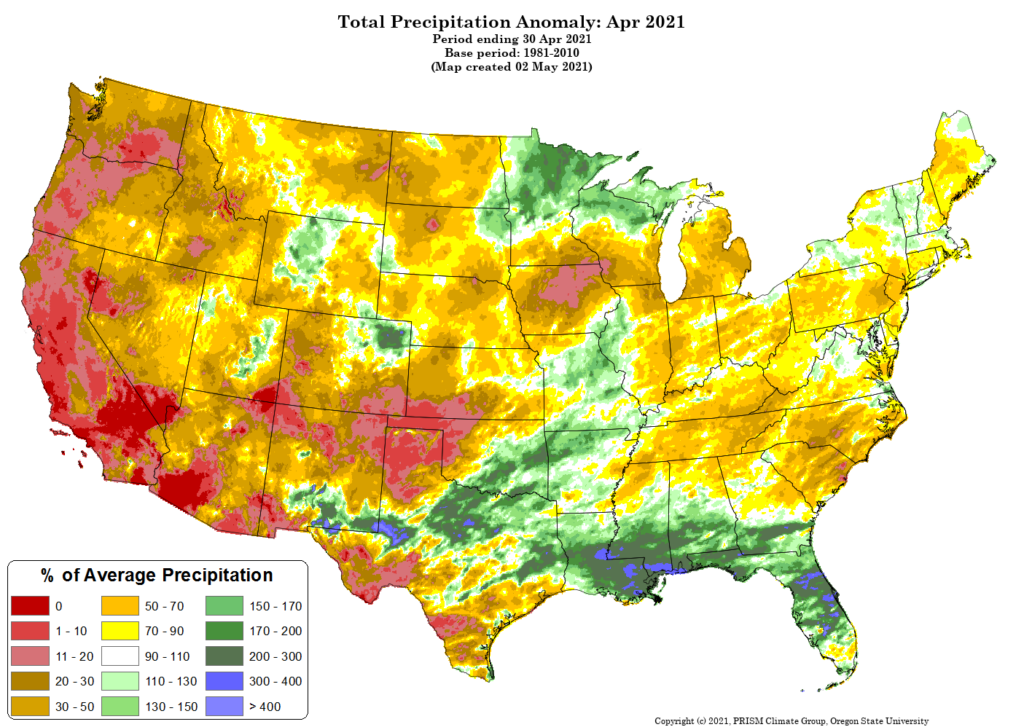
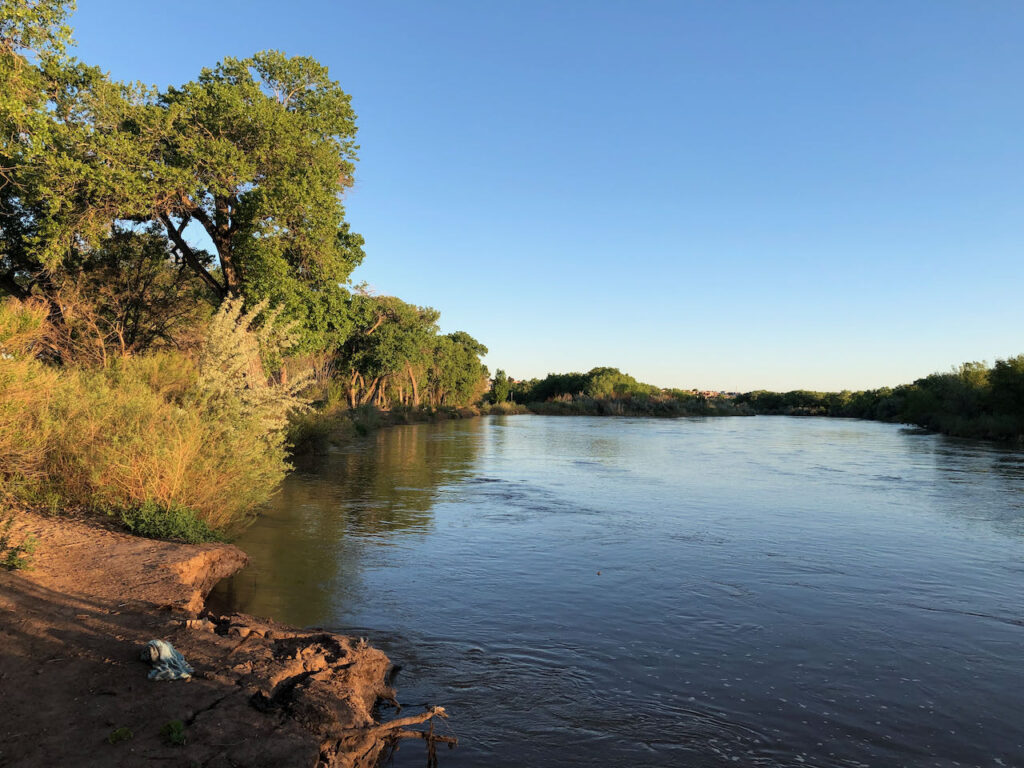
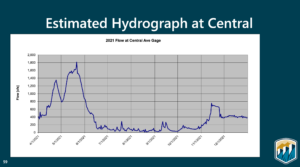
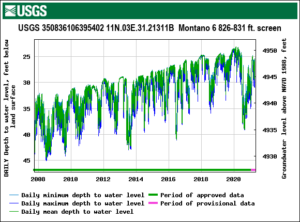 Just up the road, in an area we call “Los Griegos” that’ll likely be central to the next book, a city well field drilled in the 1950s still pulls water from the aquifer for use in the urbanized part of the city. These days its use is minimal, but with the community’s water utility in “drought reserve” operations last year, the Griegos field pumps pulled 3,000 acre feet of water from the ground for neighborhoods like mine. What water I use indoors ends up, via the wastewater treatment plant, back in the river. What water I use outdoors is spreading more green. As you can see from the graph, the aquifer in general has been rising in recent years thanks to Albuquerque’s success both in conservation and in shifting to use of imported surface water, but last year’s drought was a clear setback.
Just up the road, in an area we call “Los Griegos” that’ll likely be central to the next book, a city well field drilled in the 1950s still pulls water from the aquifer for use in the urbanized part of the city. These days its use is minimal, but with the community’s water utility in “drought reserve” operations last year, the Griegos field pumps pulled 3,000 acre feet of water from the ground for neighborhoods like mine. What water I use indoors ends up, via the wastewater treatment plant, back in the river. What water I use outdoors is spreading more green. As you can see from the graph, the aquifer in general has been rising in recent years thanks to Albuquerque’s success both in conservation and in shifting to use of imported surface water, but last year’s drought was a clear setback.
